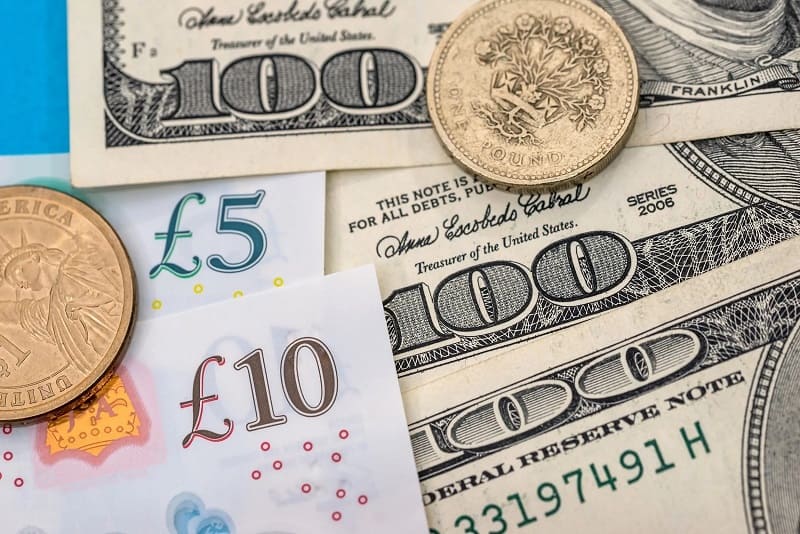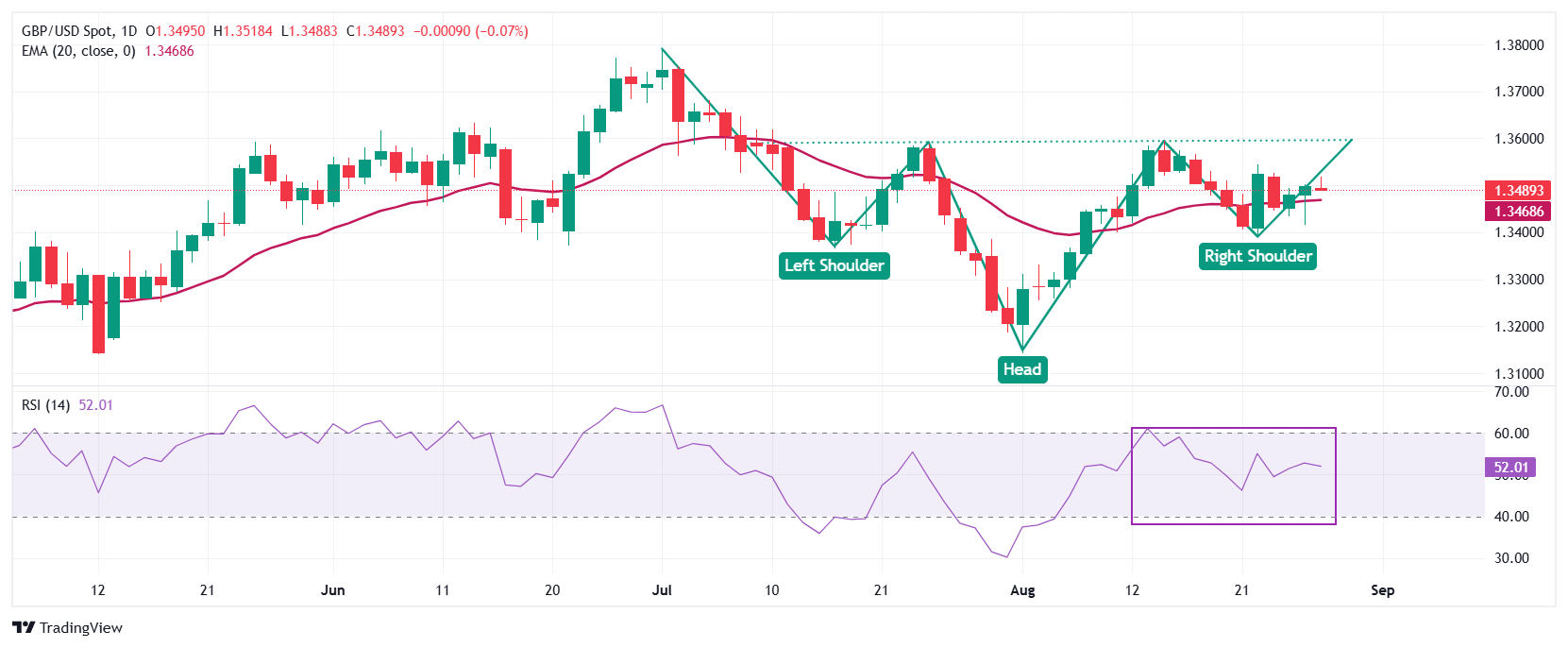
The Pound Sterling trades in a tight range around 1.3500 against the US Dollar ahead of the second estimate of US Q2 GDP.
Fed’s Williams sees the need for interest rate cuts amid worries over economic growth.
BoE’s Mann supports holding interest rates at their current levels for longer.
The Pound Sterling (GBP) is broadly sideways against the US Dollar (USD) around 1.3500 on Thursday. The GBP/USD pair consolidates as the US Dollar trades cautiously, following dovish comments on interest rates from New York Federal Reserve (Fed) Bank President John Williams on Wednesday.
At the time of writing, the US Dollar Index (DXY), which tracks the Greenback’s value against six major currencies, demonstrates sluggishness around 98.10.
Fed’s Williams said in an interview with CNBC that slowing Gross Domestic Product (GDP) growth and the fact that the economy is going through an adjustment phase are paving the way for interest rate cuts. Williams didn’t explicitly endorse lowering interest rates in the September meeting, stating that officials need to see more economic data before reaching a conclusion. "Risks are more in balance. We are going to just have to see how the data play out," Williams said.
Meanwhile, Fed’s Williams refused to comment on the termination of Fed Governor Lisa Cook, who has announced that she will file a lawsuit against her removal by US President Donald Trump. Earlier this week, Trump released the termination letter of Cook over mortgage allegations.
Daily digest market movers: Pound Sterling drops against its peers
The Pound Sterling trades lower against its major peers on Thursday, even as traders expect that the Bank of England (BoE) is unlikely to cut interest rates in the remainder of the year. The reason behind traders losing confidence in further monetary policy expansion by the central bank is elevated inflationary pressures.
Inflationary pressures in the United Kingdom (UK) have been growing at a faster pace every month since May. The UK headline Consumer Price Index (CPI) rose 3.8% on an annualized basis in July.
On Tuesday, BoE Monetary Policy Committee (MPC) member Catherine Mann also stated that interest rates should remain at their current levels for a longer period, citing that price pressures appear to be persistent.
Going forward, the major trigger for the GBP/USD pair will be the second estimate for Q2 Gross Domestic Product (GDP) data, which will be published at 12:30 GMT. The US Bureau of Economic Analysis (BEA) is expected to show that the economy grew at a faster pace of 3.1% on an annualized basis compared to the preliminary estimates of 3.0%.
Investors will also focus on the US Initial Jobless Claims data for the week ending August 23. Economists expect the number of individuals filing for jobless claims for the first time to come in lower at 230K against the prior reading of 235K.
This week, the United States (US) Personal Consumption Expenditures Price Index (PCE) data for July would be the major trigger of the US Dollar, which is scheduled for Friday.
Economists expect the US core PCE inflation, which is closely tracked by Federal Reserve officials as it strips out volatile items such as food and energy, to have risen at a faster pace of 2.9% on year against 2.8% in June, with monthly figures growing steadily by 0.3%.
Investors will pay close attention to the US inflation data as it will influence market expectations for the Fed’s monetary policy outlook. According to the CME FedWatch tool, there is an 87% chance that the Fed will cut interest rates in the September monetary policy meeting.
Technical Analysis: Pound Sterling consolidates around 1.3500

The Pound Sterling trades sideways around 1.3500 against the US Dollar on Thursday. The overall trend of the GBP/USD pair remains sideways as it remains close to the 20-day Exponential Moving Average (EMA), which trades around 1.3468.
The Cable is also forming an inverse Head and Shoulder (H&S) chart pattern, which leads to a bullish reversal after a corrective or downside move. The neckline of the H&S pattern is placed around 1.3580.
The 14-day Relative Strength Index (RSI) oscillates inside the 40.00-60.00 range, suggesting a sharp volatility contraction.
Looking down, the August 11 low of 1.3400 will act as a key support zone. On the upside, the July 1 high near 1.3790 will act as a key barrier.
* The content presented above, whether from a third party or not, is considered as general advice only. This article should not be construed as containing investment advice, investment recommendations, an offer of or solicitation for any transactions in financial instruments.


